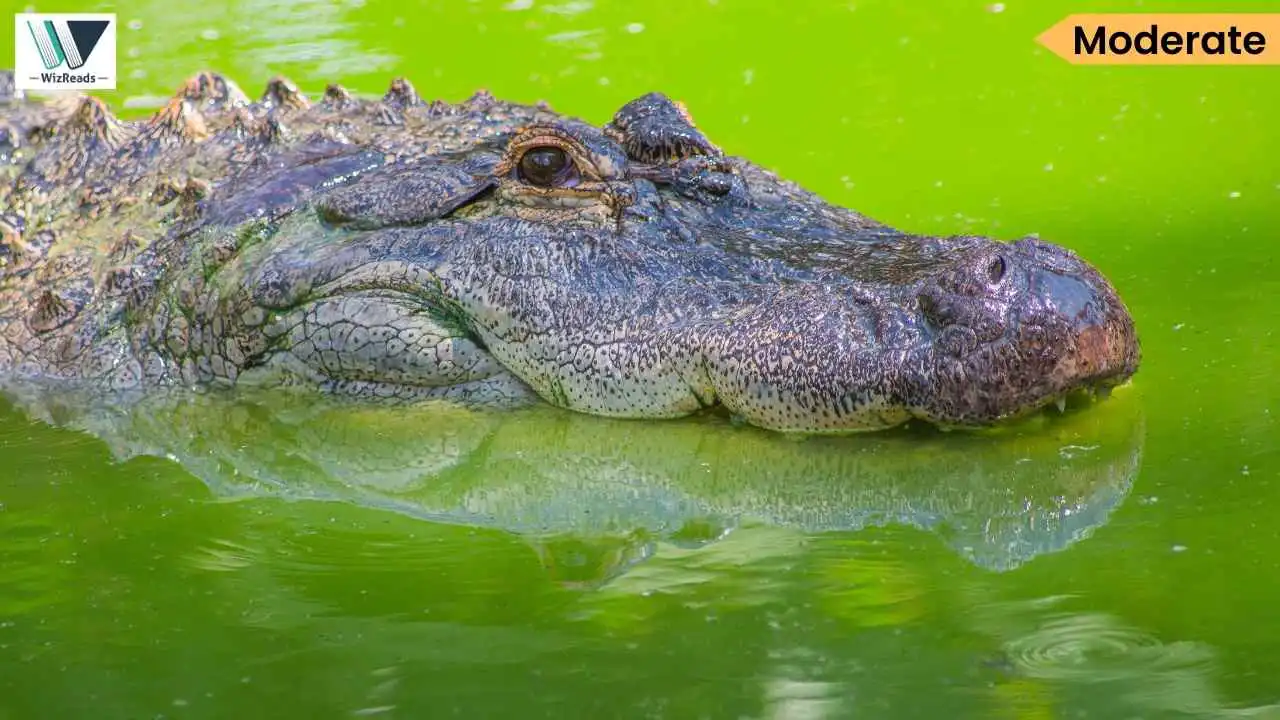
Newsletter Subscribe
Enter your email address below and subscribe to our newsletter

Enter your email address below and subscribe to our newsletter

Can those ancient “living fossils” lurking in today’s swamps actually be evolution’s most dynamic success stories? What if creatures we dismiss as prehistoric relics are actually demonstrating nature’s most sophisticated adaptive strategies? These medium difficulty RC passages analyze how crocodiles have navigated millions of years of environmental upheaval.
Read these hard RC passage(s) in Science Technology and Environment and answer the question(s) that follows. You can choose the GMAT style Reading Passage and the question or the GRE RC variant and answer the GRE-style question. Even better, you could solve both.
Crocodiles have long been dismissed as evolutionary anachronisms—creatures that supposedly ceased meaningful adaptation millions of years ago and merely persist as “living fossils” in modern ecosystems. This characterization, however, represents a profound misinterpretation of crocodilian evolutionary dynamics, as demonstrated by recent morphometric research that tracked anatomical changes across multiple species over geological time scales. Researchers from University College London employed three-dimensional modeling to analyze skull landmarks in twenty-four contemporary crocodile species and nineteen fossil relatives, revealing accelerated evolutionary modifications occurring within the past two million years across Australia, Southeast Asia, and the Indo-Pacific regions.
The study’s findings directly contradict prevailing assumptions about crocodilian stasis. Modern species exhibit rapid convergence toward specific skull configurations not because they retain ancient characteristics, but because they repeatedly evolve specialized feeding mechanisms tailored to exploit particular prey categories. Fish-eating species develop elongated, narrow snouts equipped with numerous small teeth for capturing slippery aquatic prey, while broad-snouted species evolve powerful jaws designed for crushing turtle shells and large bones. Significantly, these adaptations emerge independently in geographically separated populations: contemporary saltwater crocodiles possess skull morphology nearly identical to extinct Madagascar species, despite minimal genetic relationship. Current crocodilian diversity encompasses merely one-third of historically documented skull variations, indicating that these reptiles continuously modify their anatomical architecture in response to environmental pressures rather than remaining evolutionary relics.
The author compares contemporary saltwater crocodiles with extinct Madagascar species in order to:
This statement (“contemporary saltwater crocodiles possess skull morphology nearly identical to extinct Madagascar species, despite minimal genetic relationship”) serves as crucial evidence for the passage’s central argument about independent evolutionary adaptation. By showing that two species with “minimal genetic relationship” developed “nearly identical” skull morphology, it demonstrates that similar environmental pressures—not shared ancestry—drive morphological similarities.
Correct Answer: Choice (B)

Crocodilian evolutionary history demonstrates exceptional survival across multiple mass extinction events that eliminated most contemporary species. During the Triassic period, early crocodilian relatives occupied diverse ecological roles, with some developing herbivorous habits while others evolved bipedal locomotion similar to early dinosaurs. The Triassic-Jurassic extinction event eliminated most of these early forms, forcing surviving lineages to retreat primarily to aquatic environments as dinosaurs dominated terrestrial habitats.
Throughout the Mesozoic era, crocodilians underwent significant diversification, producing marine predators like Dakosaurus with shark-like adaptations and massive terrestrial forms such as Deinosuchus that exceeded twelve meters in length. After the asteroid impact that ended the dinosaur age, crocodilian survivors rapidly diversified into modern ecological configurations. Contemporary crocodilian species represent the culmination of this extended evolutionary trajectory, having successfully navigated multiple extinction crises through adaptive flexibility rather than remaining unchanged relics of the past.
The main idea of the passage is that:
The passage traces crocodilian evolution chronologically from the Triassic period through modern times, emphasizing their ability to survive and adapt through multiple extinction events. The concluding statement that crocodilians “successfully navigated multiple extinction crises through adaptive flexibility” encapsulates this main theme of evolutionary resilience across geological time periods.
Correct Answer: Choice (D)